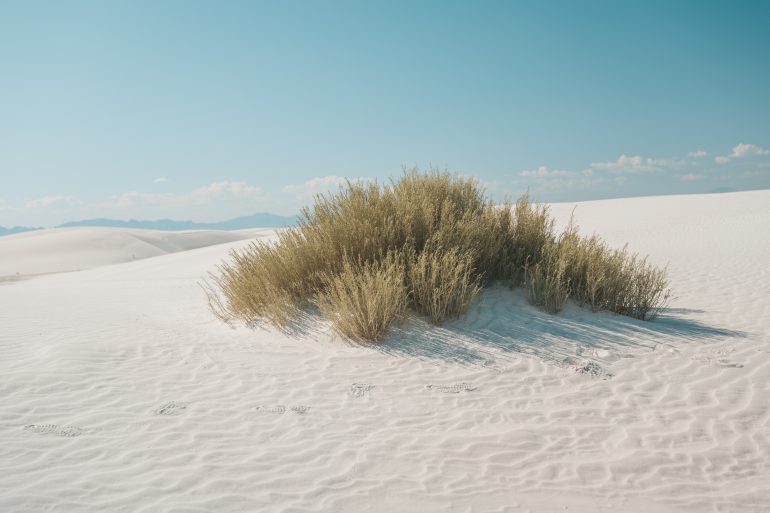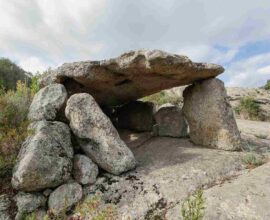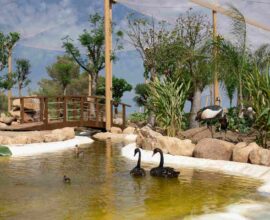Dune di Piscinas: the “little Italian Sahara” UNESCO World Heritage Site
Dune di Piscinas: the pearl of the Costa Verde
The dunes of Piscinas are one of the most evocative places in Sardinia, a desert of sand dunes reaching 100 meters, extended over about 28 square kilometres.
The imposing golden dunes shaped by the wind from the sea, are in the western part of the island, in the municipality of Arbus. They are a feature of the fascinating Costa Verde that extends for about 47 kilometres from Capo Frasca to the north, and the promontory of Capo Pecora to the south.
Alongside Sulcis, it’s considered one of the oldest emerged lands in Europe. The Costa Verde area preserves the authentic and wild soul of ancient Ichnusa and owes its name to the lush vegetation that characterizes the coast such as mastic, broom, strawberry tree and juniper centuries-old with roots well anchored to the ground but bent by the mistral wind in an elegant bow. Moreover, there is also Coccolone juniper, Limonium sulcitanum, Linaria Flava and Silena Corsica among the endemic species.
This corner of paradise, surrounded by the beautiful sea of Sardinia and loved by surfers and snorkelling fans, was inhabited since prehistoric times: the remains of two skeletons, baptized by researchers Beniamino and Amanda, found at S’Omu and s’Orcu locations which, date back to about 8500 years ago (Neolithic period) according to carbon 14 dating performed in the laboratories of the University of Arizona.
Another important finding is Amsicora, the oldest complete human skeleton of the island, found in Su Pistoccu during the excavation campaign carried out by the University of Cagliari and the University of Sapienza in Rome in 2011. According to archaeologists, Amsicora, whose name is a tribute to the leader who led the anti-Roman revolt of Sardis in the third century BC, lived during the transition period between the Neolithic and the Mesolithic, that is to say, 10,000-8,200 years ago.
The Castle of Arcuentu and some watchtowers on the coast, such as Tower of Flumentorgiu, testify that the area was also garrisoned in the Middle Ages, while between the end of the nineteenth and the sixties of the twentieth century, the history of the Costa Verde involved the mining activity for the extraction of zinc, lead and silver which mostly affected Montevecchio, more inland, and Ingurtosu, near the coast and connected to the dunes of Piscinas by a small railway to transport material.
Dune di Piscinas: the largest sandy desert in Europe
The dunes of Piscinas, nicknamed the “little Italian Sahara”, are among the highest dunes in Europe and make up a unique natural environment defined by the Italian Environment Fund (FAI) as “One of the greatest wonders of the Mediterranean“.
Over time, the incessant action of the Mistral wind has pushed the sand inland for about 2 km, creating the enchanting and sinuous hills of fine sand of different heights and shades ranging from white to yellow ocher. This magnificent spot is one of the unmissable destinations for those who go on holiday in Sardinia, the landscape mixes the evocative natural environment of the desert with the scent of the luxuriant endemic Sardinian flora in which stand centuries-old junipers shaped by the wind, mastics and olive trees that form small groves, delicate violets, beautiful sea lilies and lovely sand poppies.
Declared a World Heritage Site by UNESCO, the imposing sandy mountains which plunge into the blue and crystalline waters of one of the most beautiful seas in the world, are the home of the Sardinian deer, which are usually sighted at sunset or the first light of dawn. Along this stretch of unspoilt coast, every year on the nights of June and July, one of the most exciting miracles of nature occurs: the spawning of sea turtles (Caretta Caretta) coming out of the sea and nesting on the beach of Piscinas.
The Piscinas beach, thanks to its isolation and the natural environment little urbanized, with its 800 meters has officially become the largest naturist beach in Europe since 2018. However, in 2020 the wide stretch of naturist beach was reduced to 400 meters to promote social distance in the remaining free beach.
The dunes of Piscinas can be reached from Arbus, which is about 70 kilometres from Cagliari, easily accessible from s.s. 131 turning toward San Gavino Monreale direction Guspini/Arbus. Once in the municipality of South Sardinia, you must continue to travel in the direction of Fluminimaggiore taking highway 126, and after about 8 kilometres, turn right for Ingurtosu/ Piscinas. After the village and the mines of Ingurtosu, the asphalt road stops and you have to cross 10 km on a dirt road easily passable with any car.
Do you want to admire the majestic dunes of Piscinas and have a dream holiday in paradise? Discover the Forte Village Resort in Sardinia.






